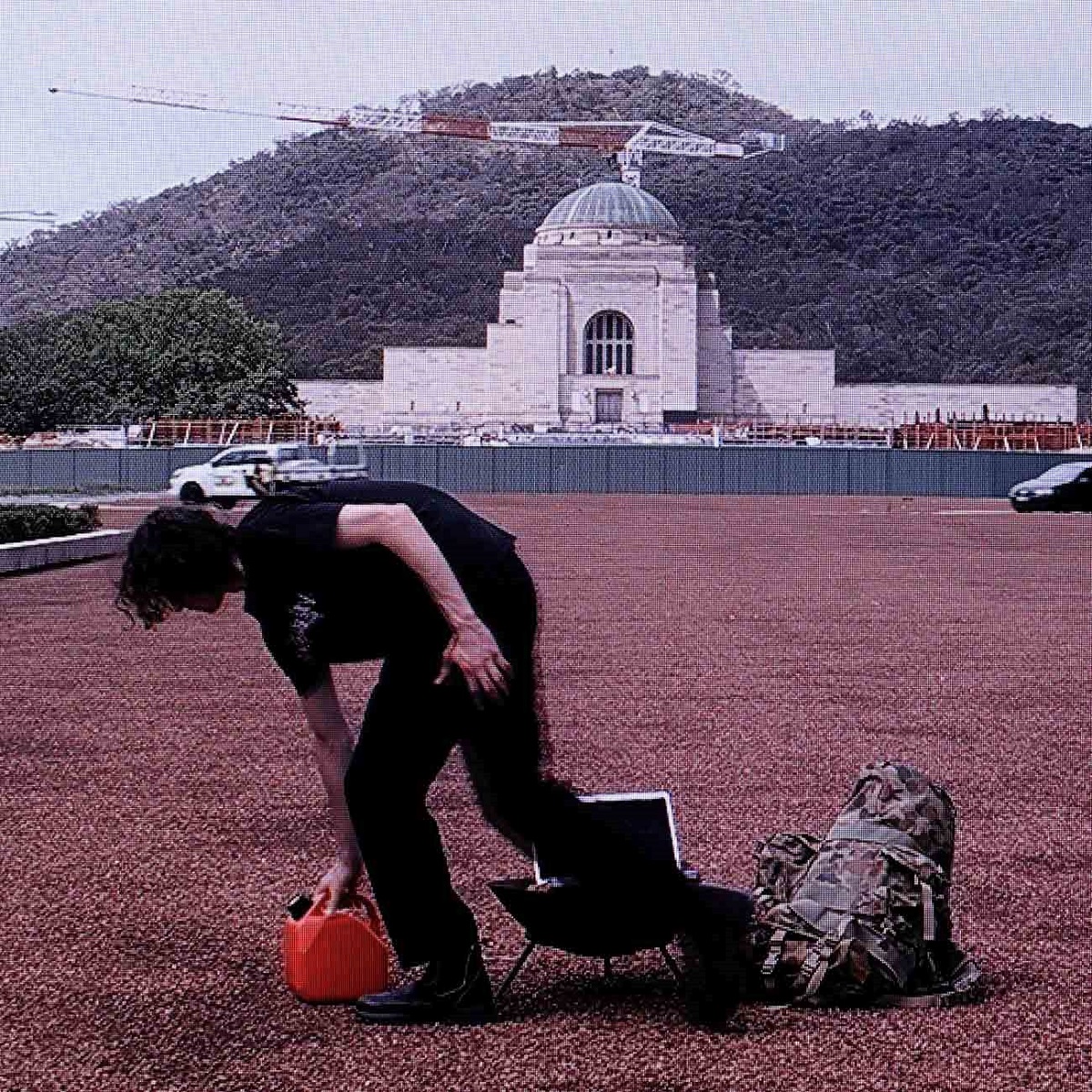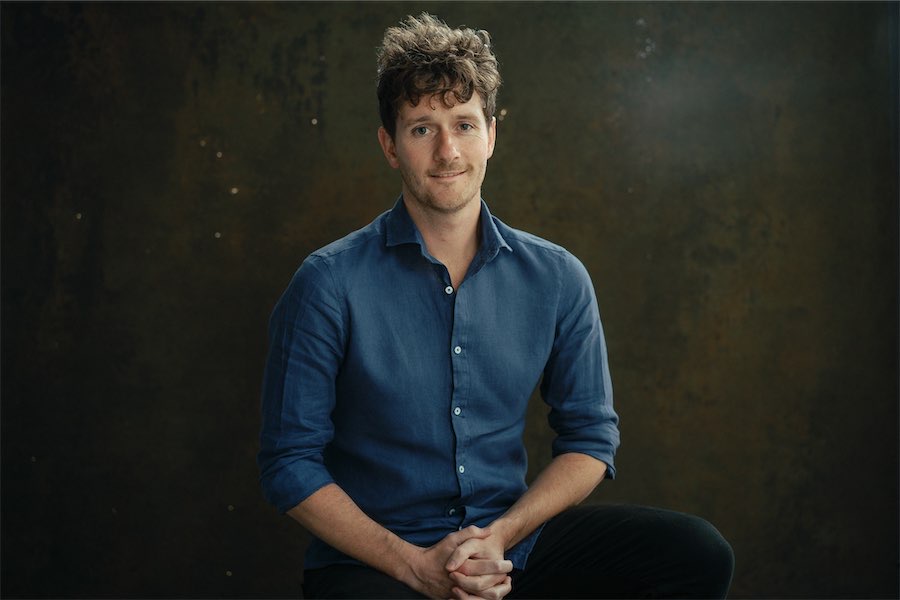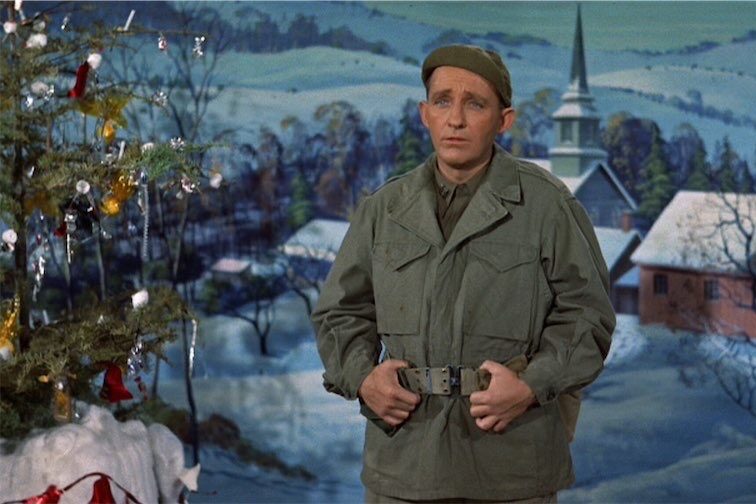
Photography / Additional Content by George Pople, in View2024. At PhotoAccess until March 9. Reviewed by CON BOEKEL.
George Pople’s Additional Content is a “guerrilla memorial” to the Afghanistan War.
The work includes a video of Pople setting up an unauthorised Afghanistan War Memorial in the middle of Anzac Parade directly in front of the National War Memorial. It includes a laptop that loops through 2200 pages of Brereton Report redactions. It features a petrol container and an Afghanistan War-era army camouflage backpack.
Following the Brereton Report, various legal proceedings have been initiated in relation to the alleged unlawful killing of 39 Afghan civilians and prisoners by 25 current and former members of the ADF.
CityNews readers would be aware that there has been a civil court case in relation to several alleged war crimes and that an appeal against the findings is under way. Pople’s petrol container refers to the burning of a laptop. The War Memorial has been forced to modify its display of Victoria Cross winner Ben Roberts-Smith’s uniform with an explanatory plaque.
In Pople’s view the redactions in the Brereton Report mask the full extent of the war crimes. This may be so. We don’t know. And that is the point.
On the other hand, Pople offers no reference to the journalists and SAS soldiers who, with considerable moral and even physical courage, combined to expose the alleged war crimes. Nor does he refer to the other major losers here – the 30,000 Australians who risked life and limb, but whose reputations have been unfairly tarnished by association.
Pople’s guerrilla memorial draws pointed attention to an unresolved issue about the Australian War Memorial. How well does it separate its primary functions as a national memorial to the sacrifices of men and women and, secondly, as a truth-telling institution?
Pople inadvertently demonstrates that it is extremely difficult to create a memorial that satisfactorily addresses the war’s complexities.
Additional Content seeks to challenge “the dominant narrative” of the military. It does that effectively but, ironically, is itself an inadequate memorial. Its focus is narrow but sharp.
The larger question remains: how should we memorialise the Afghanistan War?
Who can be trusted?
In a world of spin and confusion, there’s never been a more important time to support independent journalism in Canberra.
If you trust our work online and want to enforce the power of independent voices, I invite you to make a small contribution.
Every dollar of support is invested back into our journalism to help keep citynews.com.au strong and free.
Thank you,
Ian Meikle, editor




Leave a Reply